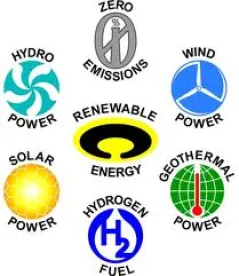The U.S. House of Representatives passed the American Clean Energy and Security Act of 2009, H.R. 2454 (“ACES”), by a narrow margin on June 26, 2009. This is the first piece of major environmental legislation to pass either body of the Congress in 20 years. The main purposes of ACES is to reduce emissions of greenhouse gases (“GHGs”) that contribute to global warming by, among other things, implementing a carbon “cap and trade” system, encouraging development of renewable energy sources, requiring a carbon capture and sequestration program for coal-fired energy sources and imposing energy efficiency standards. The legislative process has now moved to the U.S. Senate which is taking up its own climate change regulation. The leaders of the House and Senate have expressed the intention to have a vote on final legislation by the end of 2009. The final form of any legislation will no doubt be different in some respects from ACES. However, since ACES is the only bill that has emerged from either side of Congress to date, it is considered to be an indication of the general direction of federal policy that may be embodied in any final climate change legislation. While it is impossible to summarize in meaningful detail all 1,500 pages of ACES, the major components of ACES are briefly summarized below.
GHG Emissions Cap and Trade Program
The centerpiece of ACES is the GHG emissions “cap and trade” program. The “cap” part of this program consists of the mandatory reductions of GHG emissions from regulated sources in phases over a period of years from 2012 to 2050, with a 3% reduction by 2012, a 17% reduction by 2020, a 42% reduction by 2030, and an 83% reduction by 2050. The base year for purposes of calculating reductions is 2005. The regulated sources include: (i) starting in 2012, electricity generators, liquid fuel refiners and importers and fluorinated gas manufacturers, (ii) starting in 2014, industrial sources that emit annually more than 25,000 tons of carbon dioxide equivalent and (iii) starting in 2016, local distribution companies that deliver natural gas. These regulated sources account for an estimated 85% of GHG emissions in the United States.
ACES will require that any regulated source must have GHG emissions allowances or offsets for every ton of carbon dioxide equivalent emitted directly or for every ton of carbon dioxide equivalent in the fossil fuels that the regulated source creates or distributes. Under the “trade” features of the program, if a regulated source has excess GHG emissions, the source must purchase additional allowances or offsets for the excess emissions. If a regulated source has fewer emissions than are authorized by its allowances or offsets, the source may sell the excess allowances or offsets to other regulated sources. A regulated source may bank an unlimited amount of unused emissions allowances issued for the current year for use in future years and may borrow from allowances issued for future years for use in the current year subject to certain restrictions.
Allowances will be distributed in reducing amounts over the phase-in period from 2012 to 2050, corresponding to the required annual reductions in aggregate GHG emissions. Initially, 85% of these allowances will be allocated, without charge, to electric and natural gas utilities, home heating suppliers and energy-intensive industries, and the remaining 15% will be auctioned. The percentage of allowances to be auctioned will be increased annually so that by 2050 approximately 70% of the allowances will be auctioned. Trading of these allowances will be regulated by the Federal Energy Regulatory Commission (“FERC”) and the Commodity Futures Trading Commission. Proceeds of the auctions are expected to be used for the implementation of the renewable energy and energy efficiency programs authorized under other provisions of ACES.
A regulated source may purchase offsets to cover GHG emissions in excess of that source’s allowances. Offsets are reductions in GHG emissions from a non-regulated source, including GHG emissions sources in foreign countries. Trading of domestic offsets arising from agricultural and forestry projects will be administered by the U.S. Department of Agriculture, and trading of offsets arising from other projects will be administered by the U.S. Environmental Protection Agency.
ACES provides for a GHG registry that will apply to all regulated GHG emissions sources, as well as to all entities emitting more than 10,000 tons of GHGs annually. These entities will have to report to the U.S. Environmental Protection Agency their annual GHG emissions and the volume of their production or import of fuels that will emit GHGs.
Renewable Electricity Standards
ACES requires electric utilities, by 2020, to meet at least 15% of their electricity demand from renewable energy sources and to reduce an additional 5% of their demand by energy efficiencies. However, a state may request and obtain approval for an increase in the percentage of the reduction that can be satisfied by energy efficiencies and conservation. In addition, the federal government must purchase percentages of its domestic electricity from renewable sources, starting at 6% for 2012 and increasing to 20% by 2020.
Siting of Transmission Lines
Siting of electrical transmission lines is a key component in the effectiveness of the energy grid, especially in the case of renewable energy sources which are often far distant from the end users of the generated electricity. States have traditionally had jurisdiction over siting and permitting for electrical transmission lines. However, in order to create the infrastructure needed especially for transmission of electricity from renewable energy sources to the grid, ACES authorizes FERC to have limited permitting authority for interstate electrical transmission lines in certain national energy corridors if the applicable state has withheld permits or approvals for a year or more. ACES also authorizes FERC to establish conditions for transmission lines from renewable energy sources when a state has denied or imposed unreasonable conditions on a siting application.
Carbon Capture and Sequestration
ACES includes support for a carbon capture and sequestration (“CCS”) demonstration program for coal-fired power plants. The CCS program will provide for GHGs from coal-fired plants to be “captured” and then stored (“sequestered”) in deep geologic formations to avoid emission to the atmosphere. New coal-fired power plants permitted after 2020 must use CCS, and any coal-fired plants that receive permits between 2009 and 2019 must have a CCS system in place by 2025.
Energy Tariffs
Under ACES, commencing in 2020, importers of chemicals and other energy products made in countries without a GHG emissions program would be required to buy allowances before goods produced in those countries could enter the United States. This tariff program is intended to “level the playing field” for domestic manufacturers that will incur the costs of compliance with the new GHG emissions requirements.
Other Energy Provisions
ACES includes many other provisions and programs related to GHG emissions and energy policy including the following:
- ACES authorizes a $1 billion program for energy-related jobs, including job training programs for low-income workers in clean energy industries.
- ACES authorizes new subsidy programs for making public housing energy-efficient.
- ACES establishes goals for electric utilities to reduce electricity demand during peak periods by using “smart grid” technologies, including “smart” appliances and consumer electronics that can communicate with the grid, advanced electricity storage, and technologies for plug-in electric and hybrid vehicles.
Next Steps
The Senate is now taking steps to draft its own climate change and energy legislation. The Senate Energy and Natural Resources Committee recently approved the American Clean Energy Leadership Act which, among other things, requires electric utilities to obtain at least 15% of their energy from renewable sources by 2021. Senate majority leader Harry Reid has given the six Senate committees working on climate change bills until September 28, 2009 to produce their climate change and energy provisions, with the expectation that full Senate consideration of a climate change bill will start in the fall of 2009.
While the legislative process for the ACES bill is far from over, the general framework of the coming cap and trade program for GHGs is now apparent. The cap and trade program in the ACES bill has taken center stage in the debate over energy. As the program moves forward, either under the ACES approach or under a similarly-crafted legislative compromise, facilities that emit GHGs by using energy, generate electricity, or manufacture or distribute fossil fuels, as well as the parts and materials suppliers for these entities can look forward to some sort of regulation. Over time, the system for lowering GHG emissions is set to ratchet down so that GHG emissions requirements will become increasingly stringent.
These developments present energy users with not only challenges but also opportunities. Companies may act early to identify and manage energy needs and costs and to reduce emissions of carbon dioxide equivalents. Understanding energy needs and managing those costs through efficiency measures and tax incentives can lower costs now. Identifying a company’s carbon footprint can position that company to be a preferred supplier for customers who demand such action. Understanding the risks of the pending legislation can address shareholder concerns and assist in complying with SEC disclosure requirements, as well as help obtain more favorable insurance rates.
Overall, companies that act now will be able to identify the particular opportunities and challenges they face. Climate change assessments, and more broad sustainability assessments, use a team comprised of attorneys, environmental consultants, and management personnel to understand industry-specific and company-specific factors that allow the business to factor climate change requirements into both near-term and long-term planning.



 />i
/>i

